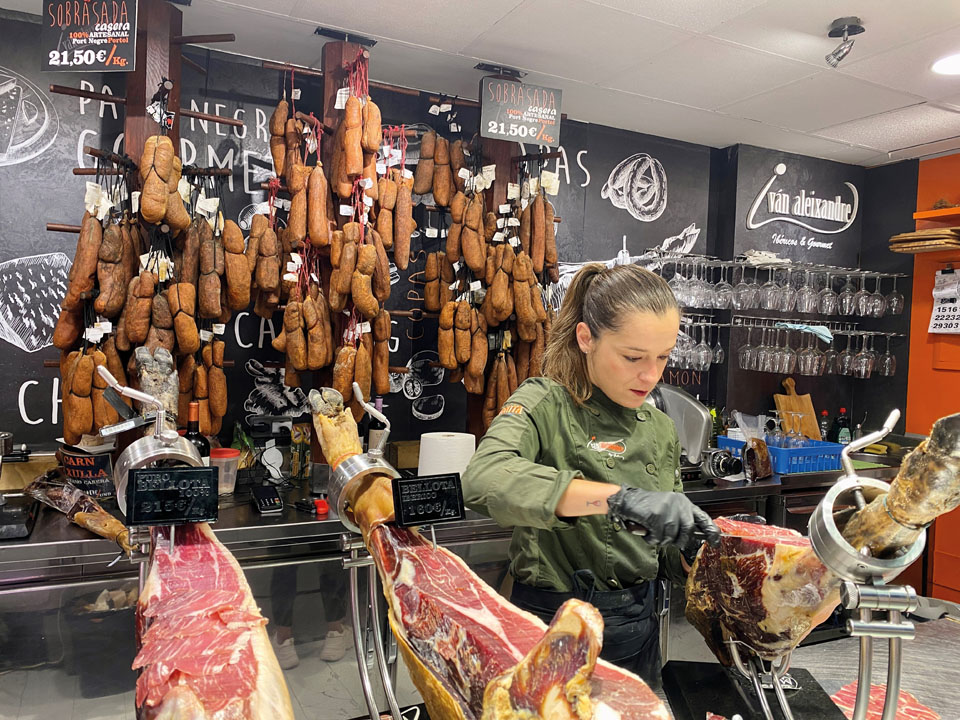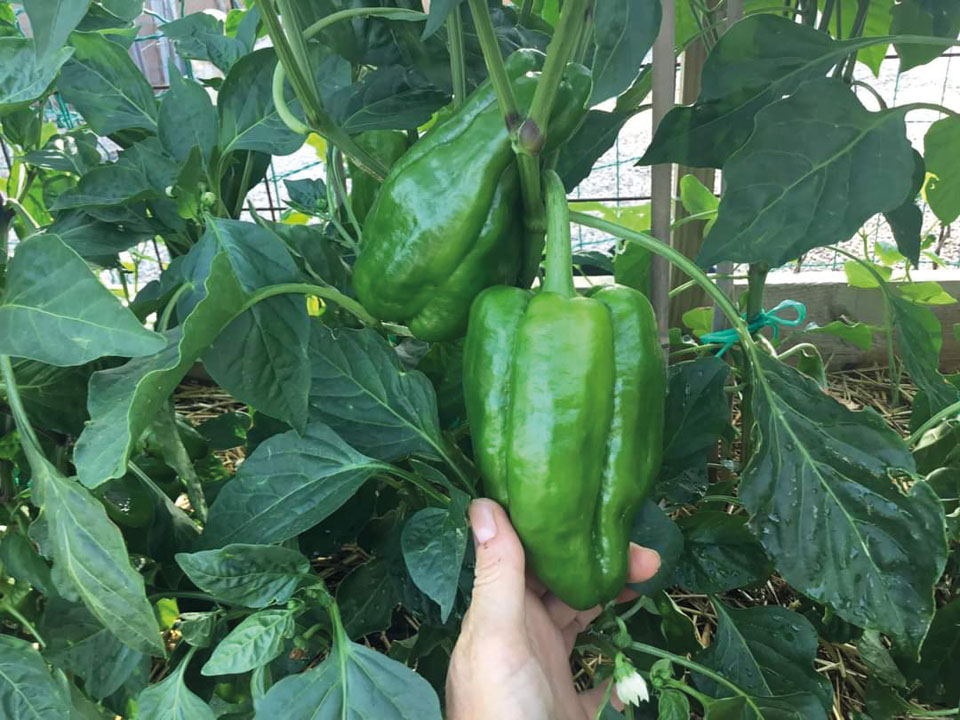Your Local Broker, Internationally
Berthon UK
(Lymington, Hampshire - UK)
Sue Grant
sue.grant@berthon.co.uk
0044 (0)1590 679 222
Berthon Scandinavia
(Henån, Sweden)
Magnus Kullberg
magnus.kullberg@berthonscandinavia.se
0046 304 694 000
Berthon Spain
(Palma de Mallorca, Spain)
Simon Turner
simon.turner@berthoninternational.com
0034 639 701 234
Berthon USA
(Rhode Island, USA)
Jennifer Stewart
jennifer.stewart@berthonusa.com
001 401 846 8404
The Mallorcan Harvest – From Produce and Cuisine, to Local Markets
By Rowan Fairbrass, Berthon Spain, berthonspain.com
The Mediterranean region is known around the world for its delicious and healthy cuisine, with Mallorca being no exception. The local diet is firmly based around eating fresh, seasonal produce, resulting in rich flavours with optimum levels of nutrition. A lot of the locally produced food items have strong cultural significance and play a role in the various celebrations throughout the year.
Furthermore, you will find different Mallorcan villages hosting food fairs during different harvest seasons, celebrating one particular kind of food. For example on the west coast in the town of Sóller, each May there is the Fira de la Taronja, where the simple orange is celebrated in all its forms. A similar celebration of the fig is held in the central village of Lloret de Vistalegre each September. There is even a Fira de la Mel held in the northern village of Llubí, where not just the honey is celebrated, but all aspects of apiculture.
The village of Campos to the south east of the island holds a f air each October celebrating the local speciality of Sobrassada. This raw, cured sausage is traditional throughout the Balearic Islands, and some parts of Catalonia. It is made up of minced pork loin or pork bacon, mixed with paprika, salt and pepper. The mixture is put into pork intestines, tied with string, and hung to cure. The making of these sausages coincides with the seasonal, ritualistic slaughtering of pigs in autumn and winter. The typical weather conditions in the Balearics at this time provide optimal conditions – high humidity and mild cold – for the dehydration of the meat. Sobrassada looks a lot like a giant chorizo, with the colour you would expect from the added paprika, and is eaten more like a meat spread than a sausage, spread over bread with a drizzle of olive oil or honey.
There is a well-established principle in Mallorca of eating seasonally harvested food. Even the large supermarkets do not always supply produce that is out of season. Each day of the week throughout the year you can visit a different food market across the island to sample the latest harvest. And you can be sure to find vast quantities of high quality, locally grown fruit and vegetables. These weekly food markets often come with artisan stalls selling local art and crafts as well as prepared goods such as sobrassada, local cheeses and fresh bread. The everyday food markets in Santa Catalina and Mercat Plaça de l’Olivar in Palma are both spectacular examples of these; they are fascinating places to visit, always bustling with shoppers and tourists alike.
One of the most commonly eaten dishes in Mallorca is quite possibly the simplest. Pa amb oli, literally translated to “bread with oil” is a delicious way to start the day as breakfast or as a morning snack. It’s humble origins may have begun with just bread and oil, but it is most likely served now as the local brown bread lightly toasted and rubbed with garlic, topped with crushed “ramallet” tomato – locally grown of course – and drizzled with plenty of olive oil. The simplicity of the classic recipe makes it easy to add extra flair and flavour with the additions of sobrassada, jamón ibérico or Mahón cheeses.
ALL IMAGES ABOVE © NATHALIE MIQUEL-ELCANO, BERTHON SPAIN
Foraging for food is also a popular past-time in Mallorca. Most of the locals I meet know a good spot for collecting mushrooms, known as “setas” or “hongos” in Mallorca, and when exactly to collect them. The months of autumn are traditionally prime time for harvesting wild mushrooms, with a range of edible varieties growing here on the island. It is not uncommon to see people along the edge of a road, basket and pruning knife in hand. As always, there are many non-edible mushroom varieties growing wild, and care must always be taken before eating anything you have picked yourself. If in doubt, visit a local market and purchase whatever they have fresh that day! In November, you can also visit a mushroom fair in the town of Mancor de la Vall.
A walk along any country lane in early spring will provide a bounty of wild plants and herbs such as the spindly stalks of wild asparagus. Unlike the cultivated varieties found in supermarkets, wild asparagus spears are much longer and thinner, and of course are far tastier. Besides this, wild garlic, wild fennel, artichokes, Swiss chard and nasturtiums also grow abundantly in the wild.
© NATHALIE MIQUEL-ELCANO, BERTHON SPAIN
An annual event in the food calendar of Catalunya as a whole is the Calçotada. A calçot is a type of scallion in the onion family, looking very similar to a spring onion or a small leek. Although available from November to April, the best months to enjoy calçots are January, February and March. A calçotada is the name given to the event of cooking the calçots – a party where the calçots are the protagonists! Families and friends will gather together and the calçots are cooked on an open grill, or in the hot embers of a BBQ. It is definitely not an indoor event! Once the blackened stalks have been removed from the embers, the charred outer layers are peeled away and the soft inner core can be eaten. Traditionally they are enjoyed together with salbitxada, a sauce made from tomatoes, almonds, olive oil, vinegar, garlic and breadcrumbs.
In the summer months when aubergines, tomatoes and peppers are ripe for harvesting, the local dish of Tumbet Mallorquin will show up on restaurant menus. Using the best flavours of the seasonal produce to their advantage, the sliced vegetables are gently fried in olive oil before being layered like lasagne with sliced potatoes and a rich tomato sauce and baked in the oven. And of course with this being a summer dish, it will not be ser ved hot, but at room temperature, accompanied by meat or firm white fish.
Another delicious treat in the summer months are fresh figs. Fig trees have reportedly grown on Mallorca since before Roman times and at one point in their history were more extensively grown than both almond trees and carob trees together. The window for buying fresh figs in the supermarket is very short – only a couple of weeks in August an d early September. You could argue that this makes them all the more appealing. Picked and eaten straight from the tree on a late summer afternoon, a treat indeed!
© NATHALIE MIQUEL-ELCANO, BERTHON SPAIN
Read Another Article
Download the Berthon Book 2023-2024 XIX (21.3MB)













